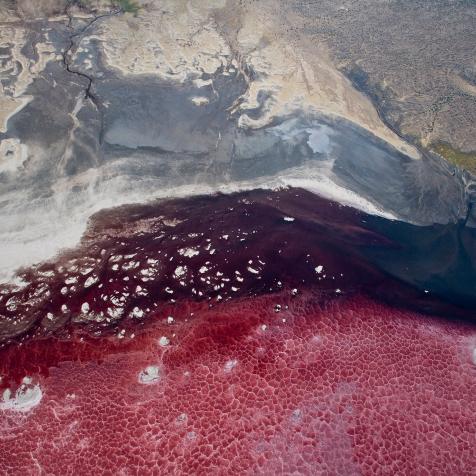
Piccard Family
Exploring Isolation: Inside the Minds of Legendary Explorers

In the time of quarantine, exploration legends Kathy Sullivan, Bertrand Piccard, and Børge Ousland know a thing or two about facing the challenges of isolation.
The first American woman to walk in space; the first man to circumnavigate the globe, both by balloon and solar-powered aircraft; and the first person to cross the Antarctic continent alone - these three explorers have all faced the unique challenges of extended time alone under immense pressure and with the highest stakes.
The Explorers Club spoke to these exploration legends last week to share their perspective of our current challenging times and their past experiences. Here’s what they had to say.
Bertrand Piccard: “Become an Explorer of Life”
Change is possible, but a lot of people hate to change—people who are facing a change usually want to resist, and what we are facing today with the COVID 19 crisis is exactly this.
What I love with adventure and exploration is that you don’t only explore the outer world - you explore the inner world. And you start to understand that when you accept the unknown - the doubts and the question marks become extremely powerful stimulations for creativity.
A crisis that we accept, becomes an adventure. An adventure that we refuse, remains a crisis. But we have the choice of what we do with it. We are pushed by the winds of life and as long as we remain at the same altitude with the same way of thinking, we will keep the same direction, which is sometimes a very bad direction.

Piccard Family
With a balloon, you can change your direction - your course, your trajectory - only if you manage to change your altitude. The atmosphere is made up of several different layers of wind, which all have a different direction and a different speed—if you want to go more to the left or more to the right, you have to fly higher or lower. And for this you drop ballast, you drop weight. Each time you drop a little bit of weight, you climb a few meters. Then you write down in your logbook for each altitude given by the altimeter, what direction you are being given by the GPS.
At the end, when you monitor the atmosphere - you have a perfect three-dimensional vision of the future. A predictable future for the first time in your life, and this is magical! Because you know for each altitude what direction you will go and you can bring the balloon back to the altitude which will take you in the direction you want to reach.
I think in life, it’s exactly the same. We have to drop the ballast of our habits, our certainties, our beliefs, our common assumptions, our paradigms, our dogmas, [and] our exclamation marks. We have to drop that overboard as ballast in order to be free—free to catch all the other behaviors, trajectories and influences that will reorient our lives in a better direction. I believe [this is] the way to become an explorer of life.
Børge Ousland: “Use Tough Times to Be a Better Version of Yourself”

Børge Ousland
I do feel that pain is relative and a lot of it is about your mindset. [I’m reminded] about a situation during my last trip when Mike Horn and I crossed the North Pole in darkness just before Christmas last year. When my sled broke, everything fell apart for me mentally because I was just focusing on the problem. But when I changed my attitude and started to look for solutions, something happened in my mind immediately. The problem went away—I started to think positive[ly], focus[ed] on solutions, and [thought] ‘what do I do with this problem?’
And I found a solution! I managed to do a big repair, which lasted 5 hours in -25°C. It was a difficult one, but it lasted all the way. That acceptance of the situation, that attitude that Bertrand was speaking about, I really can connect to that.

Børge Ousland
Not all isolation is bad - of course it’s hard. Being solo - voluntarily or not - can also be good because you reach levels inside you that you never knew existed. You do get a deeper dialogue with yourself, and nature, when you don’t have anyone else to lean on.
Use these tough times. For me, [these tough times] also represent a possibility to be a stronger and better version of myself. If I’m able to do that and I’m able to get through, I will get through as a stronger person on the other side.
Kathy Sullivan: “Be Here Now”

NASA
I’d note [that] despite the utterly different physical experiences and adventures that Bertrand, Borge, and I have shared, the lessons we’ve learned [and] the mental and philosophical muscles we’ve developed are remarkably common. The takeaway lessons from a spaceflight or a non-stop balloon flight around the world are the same lessons: What does it take? How do you orient yourself? How do you stay with the moment?
One of the things I keep in my mind as I’m working through something hard is “Be Here Now.” Not where you hope you’re [going to] be next, not what you’re worried about tomorrow—be right here now. Look around you [and] be observant. Whether this is getting through today with COVID-19, getting through those the next few kilometers on skis, or getting through a dicey bit of a space mission, the key question to ask yourself is, “What is the best right thing I can see to do now?” And you do that, and that leads to the next step, and the next step, and the next step - even when you can’t really see more than one of those steps ahead.
These edited excerpts are taken from The Explorers Club “Exploring Isolation” livestream. You can watch the entire program here.



















